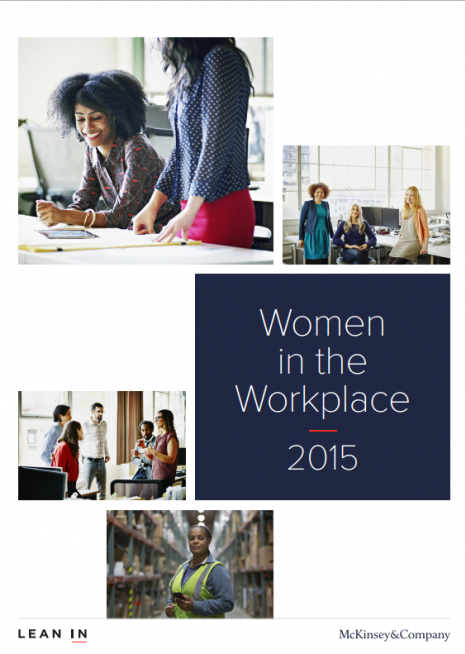
Women in the workplace 2015
A joint publication by Lean In and MacKinsey, based on employee pipeline data from 118 US companies in 2015 and 60 companies in 2012, brings out that women are still underrepresented, and they face real barriers to advancement.
Key Findings :
The leadership ambition gap persists.
At every stage, women are less eager than men to become a top executive. They are more likely to cite “stress/pressure” as a top issue, and this is not solely rooted in concern over balancing work and family. There is evidence pointing to another explanation—the path to leadership is disproportionately stressful for women.
Women experience an uneven playing field.
Women are almost four times more likely than men to think they have fewer opportunities to advance because of their gender—and they are twice as likely to think their gender will make it harder for them to advance in the future.
Gender diversity is not widely believed to be a priority.
74 percent of companies report that their CEOs are highly committed to gender diversity. However, less than half of employees believe that gender diversity is a top priority for their CEO, and only a third view it as a top priority for their direct manager.
Employee programs are abundant, but participation is low.
A majority of companies offer flexibility and career development programs, but many women and men are not using them. There is evidence that employees are reluctant to participate out of fear of being penalized. More than 90 percent of women and men believe taking extended family leave will hurt their position at work.
There is still inequality at home.
Even in households where both partners work full-time, 41 percent of women report doing more child care and 30 percent report doing more chores. Women continue to do a disproportionate share of child care and housework, so they are more likely to be affected by the challenges of juggling home and work responsibilities.
Women and men have very different networks.
Men predominantly have male networks, while women have mostly female or mixed networks. Given that men are more likely to hold senior leadership positions, women may end up with less access to senior-level sponsorship.

